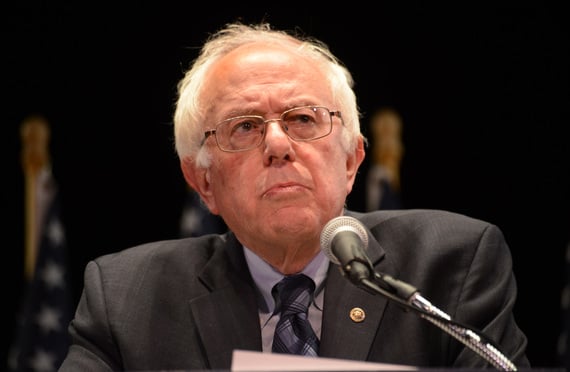 Post-midterms, both parties willbe eyeing the 2020 presidential election, and one of the key topicswill be what the social contract with America looks like. (Photo:Shutterstock)
Post-midterms, both parties willbe eyeing the 2020 presidential election, and one of the key topicswill be what the social contract with America looks like. (Photo:Shutterstock)
The famous ancient Chinese philosopher Lao Tzu stated that“Those who have knowledge don't predict. Those who predict don'thave knowledge.” Keep that in mind as you read this, as thisarticle was drafted in advance of the elections!
|While we are still waiting on results of the election, we wantedto provide some perspective on the likely outcomes, specifically onwhat the impact might be on the insurance marketplace, the health care deliverysystem, the advisors and employers that interact (plan, strategize,implement and execute) and most importantly, the employees thatparticipate in the employer-sponsored benefit plan.
|What can we expect?
Operating under the assumption that the House of Representativesis Democratic controlled while the Senate will remain Republicancontrolled, it does not seem there will be any advancement in policies that will modify eitherapproach in the direction of the past two years with respect to theAffordable Care Act (ACA) or the recently announced AssociationHealth Plan (AHP). Both are intended to make health care moreaffordable, and both will fail to meet the test.
|Neither of these policies are intended to make health careaffordable. Their approach is to reform the insurance marketplace,not the health care marketplace. The foundational underpinning ofboth approaches aggregates consumers into larger pools to leveragethe scalability of medical costs across large populations toachieve insurance premium stability. But they are very different intheir approach to solve the problem.
|Therefore, for the advisor, their client and the employee, thenext two years will be largely the status quo. If there is anychange in policy, it could be in a bipartisan approach to addressprescription drug cost and the impact of prescription drugs on thehealth and safety of the community. The national discussion around opioids, theincrease in drug prices on certain medications as well as the lackof generic equivalents are issues that both parties wish to addressfrom a policy perspective.
|The next two years
So, with no one party in control of congress and the executivebranch, what does the next two years look like? Likely, the partieswill be eyeing the 2020 presidential election and one of the keytopics will be what the social contract with America lookslike.
|For example, according the USDebtClock.org the level of debt in America continues to representa very real problem which continues to be “kicked down the road.”The numbers below illustrate the size and magnitude of theproblem.
|(These figures are as of October, 2018)
|
|
Thus, the “crushing” debt and burden on the individual will pushpolitical parties to publicly state that is a problem that requiresattention, however, their energy to tackle this and their solutionswill greatly differ.
|For example, there are a few approaches that politicians cantake to address this: raise tax revenues, cut government costs or acombination of both.
|If raising tax revenue is chosen, the impact on the individualis important. It is certain that all taxpayers will need tocontribute some amount tax revenue to buy down the debt. Theproblem is that most people are not in a secure place financially,whether this is saving for retirement or saving for a “rainyday.”
|According to the 2016 Federal Reserve Bank tri-annual survey,the average median savings balance was $7,000 based on 6,000households that responded to the survey. This does not represent acomfortable rainy-day fund in case of a short-term financialemergency. With increasing adoption of high-deductible healthplans, according to the recent Kaiser Family Foundation report, theaverage deductible was $1,600 per single and $3,200 per familycoverage.
|This information is used to support the narrative that theindividual is one medical claim away from financial hardship orbankruptcy.
|This financial picture will provide the energy to continue tocreate a new social contract with America. The discussion will showitself in the political debate around the followingbenefits-related topics:
- What to do about student debt
- How to address the rising cost of health care – medical careand pharmaceutical costs
- How to provide additional financial support to thoseindividuals in poverty
Future questions will focus on costs associated with a growingconstituent base which are those individuals that are aging up intoretirement and the costs associated with that population with someof those highlighted as cost of end of life care, cost of nursinghome care, home health care and other geriatric costs.
|Ideological tribes
With each question above, a parallel question will focus on howto pay or fund it. This will be the serve and volley between thevarious ideological tribes. In other words, any expansion of thesocial contract will result in higher taxes (personal, corporate,sales) to pay for it which, will slow the economy (employmentreductions, reduced investment for example), which is the engineneeded to pay for it. More government oversight will result ingreater regulations, larger bureaucracy, and it will be moredifficult competing in a global marketplace (resulting inemployment reductions, reduced investment in the U.S. and moreoverseas.
|With the big issues noted earlier and the current tribalmentality on the ideological islands, the political landscape andthe ability to reach across the aisle in a bipartisan manner isjust not present. But, if elected officials can work together, someof these big issues can be addressed.
|For topics like the ACA and AHP, there may be some changes onthe margins (prescription drug cost regulations for example), butnot wholesale gutting or elimination of the policies.
|During the next two years America will continue to have a morefervent discussion about what its social contract will be with thecitizens—and non-citizens—of the United States.
|If history is any teacher, this returns us to 1961 and 1962 whenJohn F. Kennedy introduced and signed into law the introduction ofbenefits for 4.4 million citizens which provided financialassistance and was paid for through a payroll increase. Reviewinghistory, there was tremendous national debate about his policygoal. In the end, he won the hearts and minds over to have thispolicy passed and put into law.
|I remain optimistic that for the next two years, the two partieswill focus their message on how to win the hearts and minds of allthe citizens of the United States to evolve the social contract.Time will tell what the policy looks like on the other side.
Read more:
- How the economy affects employer-sponsored healthcare coverage
- What might midterms mean forretirement?
- Why the future of the ACA could be decided at themidterm elections
 Perry Braun([email protected]) isthe executive director of BenefitAdvisors Network (BAN), an exclusive, national network ofindependent employee benefit brokerage and consultingcompanies.
Perry Braun([email protected]) isthe executive director of BenefitAdvisors Network (BAN), an exclusive, national network ofindependent employee benefit brokerage and consultingcompanies.
Complete your profile to continue reading and get FREE access to BenefitsPRO, part of your ALM digital membership.
Your access to unlimited BenefitsPRO content isn’t changing.
Once you are an ALM digital member, you’ll receive:
- Critical BenefitsPRO information including cutting edge post-reform success strategies, access to educational webcasts and videos, resources from industry leaders, and informative Newsletters.
- Exclusive discounts on ALM, BenefitsPRO magazine and BenefitsPRO.com events
- Access to other award-winning ALM websites including ThinkAdvisor.com and Law.com
Already have an account? Sign In
© 2024 ALM Global, LLC, All Rights Reserved. Request academic re-use from www.copyright.com. All other uses, submit a request to [email protected]. For more information visit Asset & Logo Licensing.







